Table of content
Stinky tofu and fish stew, a dish that tantalizes the taste buds while challenging the olfactory senses, is a beloved staple in Chinese cuisine. Known for its bold flavors and aromatic intensity, this recipe combines the pungent allure of fermented stinky tofu with the delicate sweetness of freshwater fish, creating a harmonious balance that has captivated food enthusiasts for generations. In this comprehensive guide, we will explore the history, ingredients, and meticulous preparation required to master this iconic dish.
The Origins of Stinky Tofu and Fish Stew
Stinky tofu, or chòu dòufu in Mandarin, is a fermented tofu product renowned for its powerful, cheesy-like aroma. Its origins trace back to China’s Qing Dynasty, where it was created as a method of preserving tofu through fermentation. Over time, this humble ingredient evolved into a culinary sensation, celebrated for its umami-rich flavor and versatility. When paired with fish, particularly freshwater varieties like carp or catfish, the dish transforms into a steaming broth that embodies the essence of Chinese comfort food.
The fusion of stinky tofu and fish is not merely a culinary accident. Fishermen along China’s rivers historically combined locally sourced fish with fermented tofu to create a hearty meal that could sustain them through long days of work. Today, this dish is cherished in households and restaurants alike, symbolizing the ingenuity of Chinese cooking.
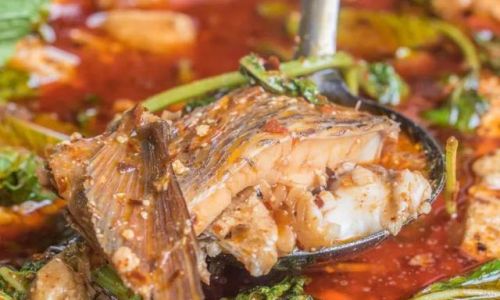
Ingredients: The Foundation of Flavor
Crafting the perfect stinky tofu and fish stew requires precision in selecting ingredients. Here’s a breakdown of the essential components:
For the Fish
- Freshwater Fish (1.5–2 lbs): Opt for firm-fleshed varieties like carp, catfish, or grass carp. These fish hold their shape during cooking and absorb the broth’s flavors beautifully.
- Ginger (3-inch piece): Sliced into thin strips to neutralize fishy odors.
- Green Onions (4 stalks): White and green parts separated; whites chopped, greens sliced for garnish.
- Cooking Wine (2 tbsp): Rice wine or Shaoxing wine enhances the fish’s sweetness.
For the Stinky Tofu
- Stinky Tofu (8–10 pieces): Choose medium-firm blocks; avoid overly soft varieties, which may disintegrate during cooking.
- Fermented Black Beans (1 tbsp): Rinsed and mashed to release their savory depth.
- Doubanjiang (1 tsp): Spicy fermented broad bean paste for a mild kick.
Aromatics and Seasonings
- Garlic (6 cloves): Minced for aromatic punch.
- Dried Chilies (4–5): Adjust to taste; deseed for less heat.
- Chicken Broth (4 cups): Low-sodium for better control over saltiness.
- Soy Sauce (2 tbsp): Light soy sauce for color and saltiness.
- Sugar (1 tsp): Balances the broth’s acidity.
- Sesame Oil (1 tsp): Drizzled at the end for fragrance.
- Cornstarch (1 tbsp): Mixed with water to thicken the broth (optional).
Garnishes and Accompaniments
- Fresh Cilantro (½ cup): Chopped, for a burst of freshness.
- Lime Wedges (4): Squeezed over the stew just before serving.
- Steamed Rice (4 cups): To soak up the flavorful broth.
Preparation: The Art of Layering Flavors
Step 1: Preparing the Fish
- Clean and Marinate: Rinse the fish thoroughly under cold water. Pat dry with paper towels. Make shallow diagonal slits on both sides to allow the marinade to penetrate.
- Marinade: In a bowl, combine 1 tbsp soy sauce, 1 tbsp cooking wine, half the ginger strips, and half the chopped green onion whites. Rub this mixture over the fish, inside the slits, and let it marinate for 20 minutes.
Step 2: Preparing the Stinky Tofu
- Drain and Rinse: Place the stinky tofu blocks in a colander and rinse under cold water for 2 minutes to mellow the aroma slightly. Pat dry.
- Pan-Fry (Optional): For added texture, heat 2 tbsp vegetable oil in a nonstick pan and fry the tofu until golden brown on both sides. This step is optional but enhances the tofu’s chewiness.
Step 3: Building the Broth
- Sauté Aromatics: Heat 3 tbsp vegetable oil in a large wok or Dutch oven over medium heat. Add the remaining ginger, garlic, dried chilies, and fermented black beans. Stir-fry until fragrant (1–2 minutes).
- Add Doubanjiang: Stir in the doubanjiang and cook for 30 seconds to release its spicy oils.
- Deglaze with Wine: Pour in the remaining cooking wine, scraping the bottom of the pan to incorporate any caramelized bits.
- Simmer the Broth: Add the chicken broth, soy sauce, sugar, and half the green onion greens. Bring to a gentle simmer and cook for 10 minutes to meld the flavors.
Step 4: Cooking the Fish and Tofu
- Lower the Fish: Gently place the marinated fish into the simmering broth. Add the stinky tofu blocks around it.
- Poach Gently: Maintain a low simmer (avoid boiling, which can break the fish). Cook for 8–10 minutes, or until the fish flakes easily with a fork.
- Thicken (Optional): If desired, mix cornstarch with 2 tbsp water and stir into the broth until slightly thickened.
Step 5: Finishing Touches
- Garnish: Sprinkle cilantro, remaining green onion greens, and a drizzle of sesame oil over the stew.
- Serve: Ladle the stew into bowls with steamed rice. Offer lime wedges on the side for a citrusy zing.
Mastering the Pungency: Tips and Tricks
- Aroma Management: Stinky tofu’s scent is potent. Cook in a well-ventilated area and inform household members beforehand!
- Fish Selection: Avoid oily fish like salmon, which can overpower the broth. Freshwater varieties with mild flavors work best.
- Customizing Spice: Adjust chili quantities to suit your palate. For a milder version, omit dried chilies and use sweet paprika instead.
- Broth Enrichment: For a richer stew, substitute half the chicken broth with fish stock or clam juice.
Health Benefits and Nutritional Notes
Stinky tofu and fish stew is not just a feast for the senses—it’s also a nutritional powerhouse. Fermented tofu is rich in probiotics, which aid digestion, while fish provides omega-3 fatty acids essential for heart health. The dish is also low in calories and high in protein, making it a wholesome choice for balanced diets.
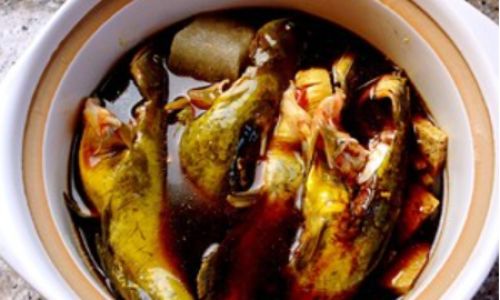
Cultural Significance: Beyond the Kitchen
In Chinese culture, stinky tofu symbolizes resilience and adaptation—a testament to turning humble ingredients into culinary gold. The dish’s polarizing aroma has even inspired festivals, like Taiwan’s annual Stinky Tofu Festival, where vendors compete to create the most innovative variations.
Variations and Regional Twists
- Sichuan-Style: Add Sichuan peppercorns and chili bean paste for a numbing, spicy kick.
- Cantonese Twist: Incorporate dried shiitake mushrooms and bamboo shoots for earthy depth.
- Vegetarian Adaptation: Substitute fish with king oyster mushrooms and add tofu puffs for a plant-based alternative.
Troubleshooting Common Issues
- Fish Falling Apart: Ensure the broth simmers gently; vigorous boiling will break the fish.
- Too Salty: Balance with a pinch of sugar or a splash of unsalted broth.
- Bland Broth: Amplify flavor with a splash of fish sauce or a teaspoon of miso paste.
Conclusion: Embracing the Stink
Stinky tofu and fish stew is a dish that demands courage—to savor its complexity, one must first embrace its pungency. Yet, beneath its assertive aroma lies a symphony of flavors that rewards the adventurous eater. Whether enjoyed in a bustling night market or a cozy home kitchen, this stew is a reminder that true culinary magic often lies in the unexpected. So, take a deep breath, dive into the broth, and let the stink lead you to flavor’s doorstep.
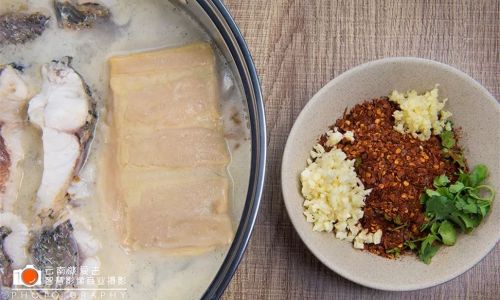

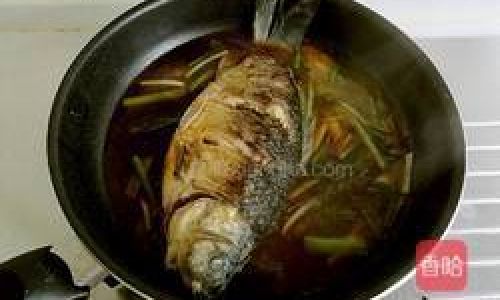
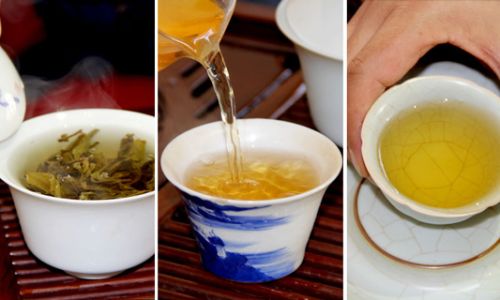
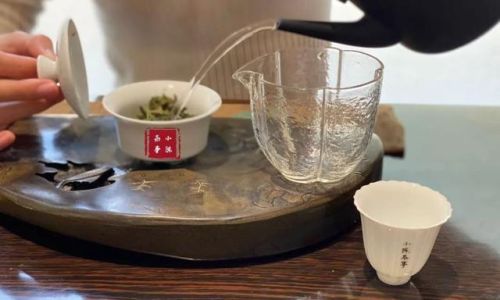
0 comments